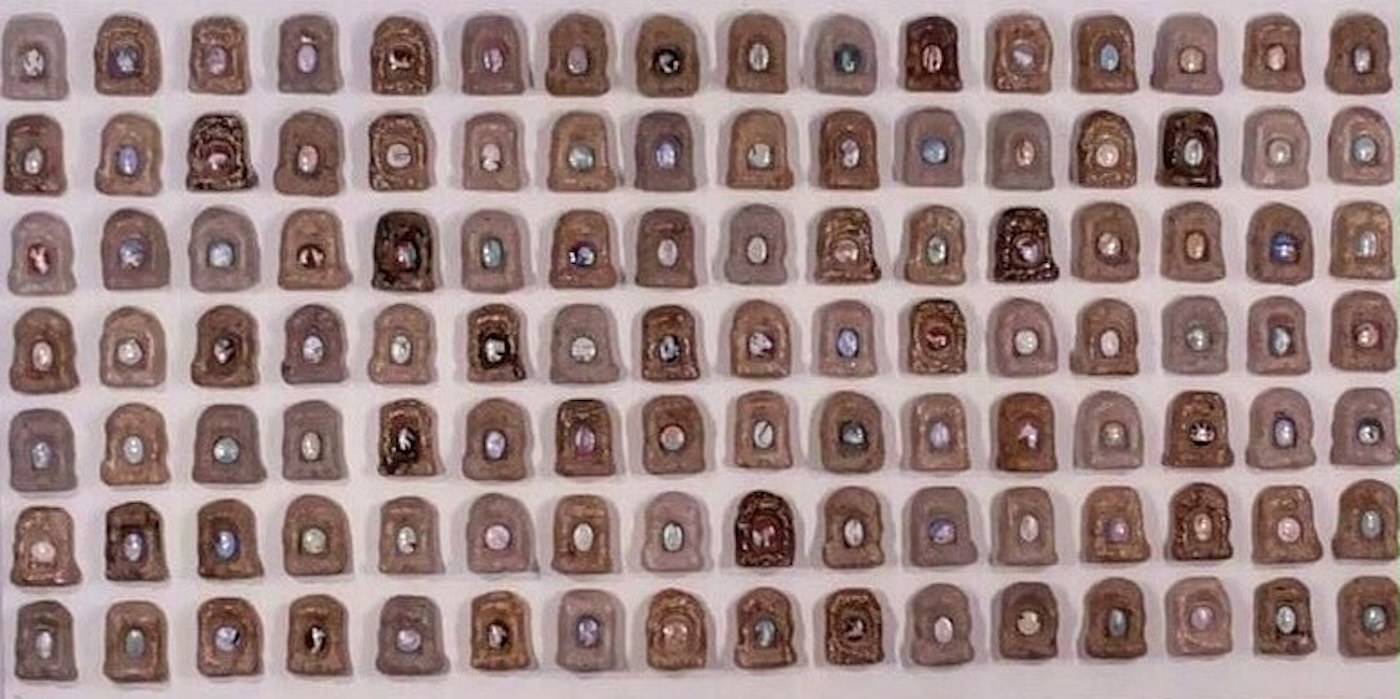01.2942Thangka 唐卡
Kang Qing 康青
Artist Biography
Kang Qing gained her BFA from the China Academy of Fine Arts. She taught in Jingdezhen Ceramic Institute in 1989 and was a visiting lecturer at Harvard University in 2001. She is currently Associate Professor of Shanghai Academy of Fine Arts, Shanghai University and Director of Shanghai Artists Association.
Exhibitions include:
2020: “Inclusive Break” German & Chinese Women Artists Invitation, Liu-haisu Art Museum, Shanghai
2019: 10th Shanghai Art Grand Prix, Shanghai Art Museum
2019: Ceramic with Colours, Kobe County Museum Japan
2017: Solo exhibition: “In & Outside”, Liu-haisu Art Museum, Shanghai
2016: ” Curve” Three major museums in Bristol and Stoke-on-Trent, UK
1989年 毕业于浙江美术学院(中国美院),曾任教景德镇陶瓷学院,2001年短期任教于哈佛大学,现为上海美术学院副教授,上海陶艺家协会理事。
展览及艺术活动:
2020: “间有小憩-不同世界的时间表达”中德女性艺术家邀请展 刘海粟美术馆
2019: 第十届上海美术大展 中华艺术宫
2019: “水与墨之匠”中日陶艺展, 获神户教育委员会赏。 兵库县立美术馆,日本
2017: 个展:“标-本” 刘海粟美术馆
2016: “锋-锐”中国当代手工艺展 英国布列斯托,斯托克三大博物馆
Artist Statement
Padmasambhava is a collection of Buddhas of ten directions and three generations. There are eight kinds of body changes, also known as the eight phases of the lotus master. It can give all sentient beings the liberation of entering and leaving the world law. Padmasambhava holds “Gabala” in his left hand and “five cobalt sceptre” in his right hand.
The significance of the “skull Gabala” holding manna is the essence of the mystery of Dharma and the true meaning of the pure and uncontaminated nature. “Five cobalt sceptre” shows that lotus master can turn five poisons into five wisdoms. His hand gestures magically bridge the inner soul and the world. I made 108 cave shape ceramics as Padmasambhava is everywhere, and I painted each cave with an over-glazed symbolic hand, not for conquering demons, but praying to reinforce energy and wisdom to this fragile world.
莲花生大师是十方三世诸佛的总集。有八种变化身,又称莲师八相。能赐予一切众生入世间法、出世间法的解脱。莲师的法力主要是通过他的手势以及手中的法器,左手持头骨「嘎巴拉」,乃表征法性奥秘的真髓及清净无染自性的究竟义理,并以之盛甘露。右手持金刚五钴杵,表莲师能转五毒为五智。两只手似乎是拨动灵魂与世界沟通的桥梁,我以108个洞窟的形式作为莲师无处不在的背景象征,每个洞窟中一双莲师的手,不是除魔,而是为这脆弱世界的每个角落增加一点能量和智慧。
Selected Buddhist Object from Chiddingstone Castle
01.2942 Thangka
Thangka (temple wall hanging), painted cotton with a silk brocade mount.Padmasambhava, one of the first teachers of Buddhism in Tibet, holding a staff, seated on a lotus throne, and surrounded by other deities. Tibet, 18th century.
Length: 125cm, Width: 70cm
Denys owned several thangkas which were folded into picture frames and displayed along a wall in the Castle. Thangkas are painted cotton and silk brocade hangings, which usually depict a Buddhist deity or important teacher. A new mount for the Castle’s thangka collection was created last year for the Buddhist Room. The new thangka mount reflects their original context as sacred paintings hung in a temple. Thangkas were also designed to be easily rolled up and transported, so that they could be used for teaching. This thangka depicts one of the most important Tibetan Buddhist teachers, Padmasambhava. He is considered to be one of the key teachers responsible for bringing Buddhism to Tibet in the 8th century.
“Hands as Avalokiteshvara” porcelain installation
“手-相”陶瓷装置
Dimensions: each 18x12x7cm
2018
单个尺寸18*12*7厘米
2018











